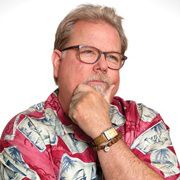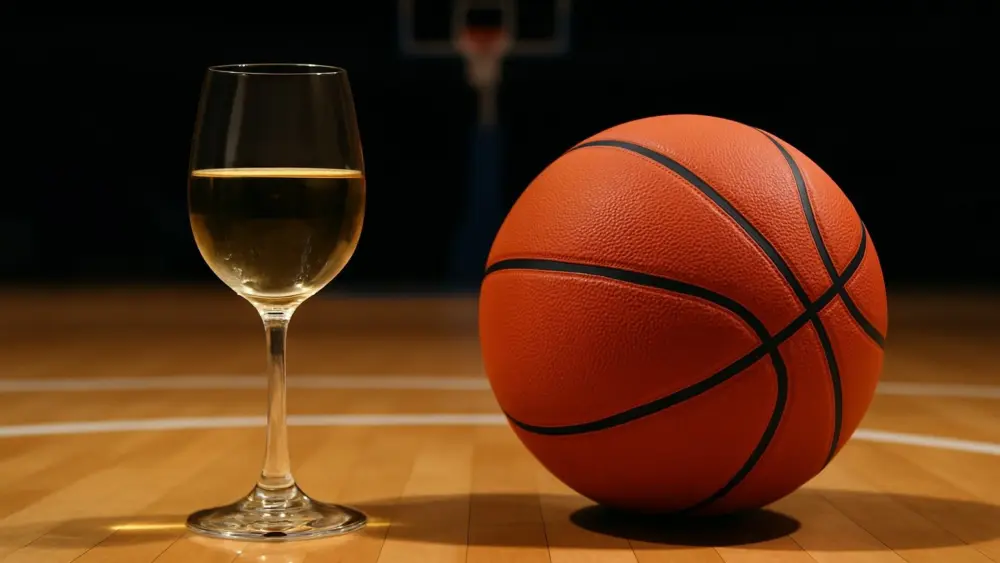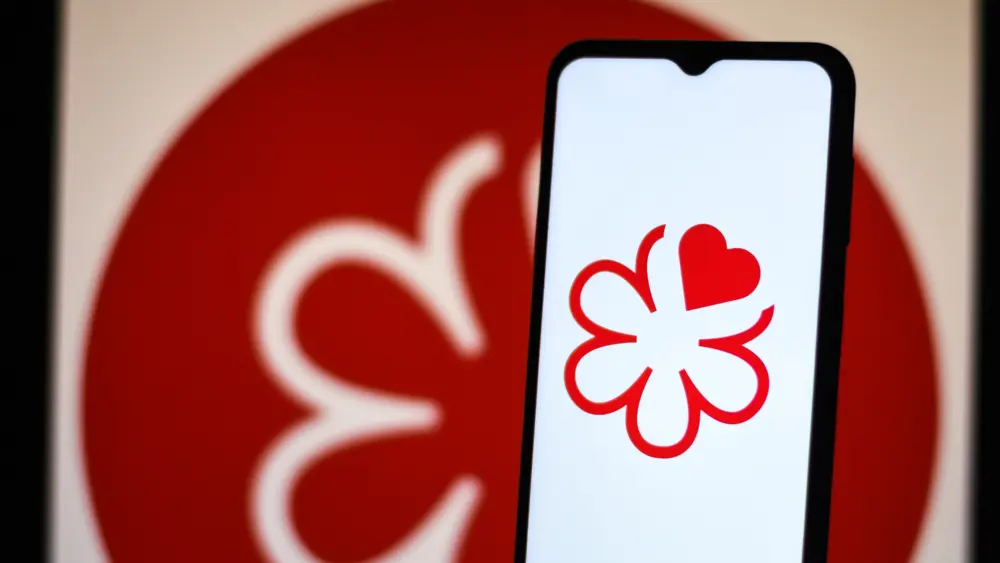Experiential Tourism comes to Wine Country.
As a kid, vacations were an exercise in discovering boundaries and testing family fabric. For instance, how long is too long without a shower when you’re camping? When Mom wants to visit the Pearl Harbor Memorial, what’s the best way to remind her you’re 16 and would rather hang at the beach and try to score a beer? And if you were to score the beer, what would you do with it?
Vacations have changed in a big way—and not just because I can have a beer whenever I please. Today, folks are considering alternatives to hopping a jet for another continent and touring historical ruins. They’re thinking twice about all-inclusive cruises with midnight buffets and staterooms the size of George Bush’s heart. Sitting on a lush beach baking in the sun like a lizard as gentle tradewinds softly rustle the palms around you isn’t quite the draw it was back before the fear of skin cancer grabbed hold.
No, some of us are now in search of experiences that we not only can’t find back home but are also utterly unqualified for. And whipping out the plastic can make that problem disappear like luggage that never made your connecting flight. Ironically, sometimes these vacations involve paying large sums of money to do stuff you’d normally pay somebody else to do on your behalf—like, say, clipping unruly vines around the garden.
The choices for these types of outing are everywhere. Accountants who never starred in Little League but dreamed of playing centerfield for the Yankees now blow $3,000 on a week in Arizona at baseball fantasy camp. They rub shoulders with former pros, take batting practice on carefully manicured fields and wonder about scoring steroids.
Folks travel to Paris to spend five intense days in a cooking school learning how to create a paté, an amuse bouche and to pair wine with cheese. Ah, the City of Light with quaint cafés, friendly people and plenty of cigarettes. Hard to put a price tag on that sort of experience—but $4,300 is the neighborhood you need to shop in. By the way, that gets you lunch each day but doesn’t include hotel or airfare.
Bon appétit.
Happy campers
A few years ago, I was on assignment for a Bay Area magazine, covering a basketball fantasy camp at Sonoma State University. It was hosted by Don Nelson, who was then on his first tour of duty with the Golden State Warriors. The camp was filled with basketball players of every stripe, some of whom had played high school, some college, but most everyone still played in gyms to work up a sweat and stay in contact with their lost youth. While Nelson talked to one group under a hoop and Tim Hardaway addressed another, a third was soaking up the wisdom of Bill Walton on the art of rebounding and defense in the key. Walton, a Hall of Famer who does TV commentary and can speak eloquently about hoops or the Grateful Dead, was taking questions. One camper, maybe 5 feet 10 inches tall, 45 years old and folically challenged, asked, “What can I do to improve my leap?”
Walton did his best to suppress a grin and then offered, “Get younger.”
Think of the movie “City Slickers,” where Billy Crystal, Daniel Stern and the late Bruno Kirby pay to go on a cattle drive so they can have a bonding experience and a midlife crisis at the same time. They punch doggies and eat chili by a campfire while the late Jack Palance menaces them. In the movie trade, this is called a flick with too many dead guys.
In the travel trade, this kind of outing is called “experiential tourism,” and it’s all the rage. It’s happening right here in the North Bay. Look no farther than the vineyards of the Sonoma or Napa valleys for proof. With the harvest season just ending, a number of wine camps have recently graduated vacationers who can now go back to Des Moines, Missoula or Raleigh and tell their neighbors about picking grapes at the proper brix level, how real sparkling wine is created or even how tough it is to blend wine when you’re suffering from a world-class hangover.
According to travel industry types, experiential tourism is on the rise because it’s interactive, and it gives people a chance to immerse themselves in an experience far removed from the everyday. While on one of these outings, people are automatic insiders and VIPs; they meet real insiders and take away an experience that can’t be found back home—for any price.
Becoming a winemaker for a day is great, but how about really thinking outside the box? How about Bank Robber Camp, where you get the behind-the-scenes skinny on how to check for dye packs, write first-class notes and learn the secret to opening safes? What about Painting My House Camp? A few lucky souls would pay me some cash to come and paint my home under the direct tutelage of my friend Gary, a first-class painter. Learn the ins and outs of cutting a room, the do’s and don’ts of blending paints. And every camper gets a free t-shirt and a Dutch Boy cap.
OK, maybe wine camp has more promise. Savvy winery owners and sharp entrepreneurs have realized there’s a market for unique behind-the-scenes winery experiences. And vacationers will head home loaded with digital photos and winery togs and bottles of wine and become “ambassadors for us,” as Hugh Davies, president of Schramsberg, puts it.
Lest you think the bubbly experience at “Camp Schramsberg” is the only place to vacation while communing with the grape, St. Supéry offers a “Harvest Adventure” and Fantesca Estates & Winery has a “Hands on Harvest.” The Sonoma County Winegrape Commission teams with a few other organizations to host “Sonoma County Grape Camp,” and Affairs of the Vine is looking for a few good people for its “Wine Boot Camp.”
And there are others. Diageo Chateau & Estate Wine hosts an annual Crush Camp, while Harlan Estate offers the most exclusive hands-on winery experience, the members-only Napa Valley Reserve. We’ll revisit the Reserve later. For now, let’s concentrate on winery experiences that don’t require $140,000 upfront. (Yes, you read that right.)
Wine warriors
What’s the draw of the wine camps? “There are lots of reasons people sign up for Wine Boot Camp,” says Barbara Drady, the entrepreneur behind Affairs of the Vine, a Wine Country company that organizes wine events. After more than 30 years in the wine business (sometimes representing wineries, sometimes working directly for wineries, but always in the sales end—and always incorporating a teaching element), one gets the feeling Drady may have an idea about why folks vacation while picking grapes and pushing wine barrels. “It’s the ultimate one-upsmanship: to go home and talk about how you worked in a vineyard, and here’s the bottle of wine you blended with your own label.”
A recent article in the Wall Street Journal would seem to back up Drady’s observation. The story reported that most Americans don’t use all the vacation time they earn, and faster getaways have become de rigueur in corporate offices all over the country. Those climbing the ladder with eyes on a corner office are often hard-pressed to leave the office for too long, and they’re on the lookout for outings that will make a splash when they get back to the water cooler…or check in via Blackberry.
Besides bragging rights, vacationers are picking the vineyards and crush pads because they’re food fans and wine warriors. “We see lots of people who love food or want to learn more about pairing food and wine,” says Davies. One of the top producers of bubbly, Schramsberg’s fall harvest camp is heavy on food, with four meals provided at the Culinary Institute of America in St. Helena as well as two different sessions on how to pair foods with sparkling wines.
There’s also the undeniable draw of romancing the ground. Whether we want to acknowledge it or not, before the industrial age, the United States was very much an agricultural society. Our economics were inextricably woven with societal norms and the family farm. It wasn’t about raising heirloom tomatoes and blue lake beans in a patch cleared on the side yard; it was about putting food on the table and going to market with what you grew.
Today, the closest most of us get to that is the weekly farmers market or looking at a picture of a farmer above the romaine in Whole Foods. But the draw of the dirt is still strong. “I love having people working in the vineyard, because something happens,” says Drady. “They learn what makes the grapes good. They learn the difference between an $8 bottle of wine and a $40 bottle of wine.”
Truth be told, toiling in the vineyard is hard work on a daily basis, and none of the behind-the-scenes vacations really give much of glance at what farmworkers do each day. The hands-on experiences come at the busiest time of the year—harvest—and so time on the vine is short by design, because the work needs to get done on a timeline that’s best left to professionals, while the amateurs settle in for some barrel tasting and blending. And while wine campers bed down beneath down comforters on 400 thread count sheets, the real farmworkers are more likely going home to cramped apartments.
But that’s not the romance of the vine; that’s the reality and not what anybody’s selling (or, for that matter, buying).
From the roots
Talk to Barbara Drady and you get a pretty good picture of how the wine getaway got its start. “I’ve been at this more years than I care to admit,” she says. “I was selling wine in the Midwest and I started up an incentive sales promotion for some of our people in the trade to come out to Wine Country and participate in the harvest. That was more than 20 years ago. Nine years ago, I started it for consumers. When we began it for the trade, it was a week long. For consumers, we took it down to a 12-hour day.”
Drady’s hook is using military terms. She’s a major and the ranking officer; recruits assemble at a forward post after receiving marching orders via email. The new recruits are uniformed and given a quick education designed to help them “ask the right questions,” Drady announces. “We’re looking to de-snobify the whole wine experience. Too often, drinking wine turns into a mysterious thing, and people are afraid to ask questions about the wine. We want people to leave here confident enough to ask questions when they want to know something.”
For $475, recruits participate in an aromatic workshop where they get a sense of the difference between a hint of hibiscus and pencil shavings. They get to work the vineyard, pair food and wine, crack the secret code of restaurant wine lists (this session is led by a former CIA spook-turned-sommelier), blend their own wine and do both varietal and appellation tastings.
Schramsberg began its camp after searching for creative ways to market sparkling wine around the millennium, according to Davies. Originally billed as the Schramsberg Sparkling Symposium, the event was aimed at industry professionals like chefs and hospitality workers who poured and purchased sparkling wine. Later, it morphed into the present event, where campers (limited to a maximum of 30) first partake in a Sunday night welcome dinner. Monday finds them at the CIA for breakfast, followed by harvesting grapes; lunch back at the CIA is a precursor to a session on how to pair food with sparking wine. The second day includes a vertical tasting of base wines to a finished product, a tour of the caves and a chance to create their own sparkling wine. The camp is $995, but half the tab is tax deductible for CIA scholarships. Schramsberg also offers a spring blending session, which substitutes vineyard pruning for harvesting activities.
Everybody’s doing it
For Fantesca Estate & Winery, Hands on Harvest is more than just a way to expose campers to the wine business. The Napa Valley winery has no tasting room, so having campers sample its wines in an intimate environment is a way for them to extend the winery brand. Founded by the husband-and-wife team of Susan and Duane Hoff, the one-day affair begins with breakfast and finishes after lunch with the Hoffs. In between, winemakers Nils and Kirk Venge take campers through what harvest is like for a winemaker. Campers pick and sort grapes, taste past vintages and have a component tasting of the current vintage. “We love this event,” says Susan Hoff. “You get to meet so many different types of people. When they return to Napa Valley, they’ll often call us for tasting or restaurant tips, like we’re longtime friends—even if we’ve only just met each other.” Cost is $175 per person and limited to 16 people.
St. Supéry has been offering its Harvest Adventure for five years. Limited to just 12 people at $295 per person, the day begins at the Atkinson House on the winery’s grounds for a little breakfast to fortify campers for the day ahead. Winemaker Michael Beaulac leads an instructive tour of the vineyards and a how-to on grape picking. Campers are invited to pick as well as stomp grapes. Later, they’re led through the crushing station and, if the winery is crushing that day, to taste free run press juice (which is way different than free range chicken). Campers taste wines in progress in the barrel room and create their own red Meritage blend from barrel samples of Bordeaux varietals including Cabernet Sauvignon, Merlot, Petit Verdot and Cabernet Franc. A gourmet lunch prepared by the winery’s chef follows, wherein the wine flows very much like, well, wine. Lesley Russell, vice president of direct marketing and sales for St. Supéry, says the event is a bonus for the winery, since it gives campers a unique experience and always creates word of mouth when they get home.
The Sonoma County Grape Growers Camp is designed to not only get campers into the vineyard, but also to extend the Sonoma County food and wine brand message. A partnership between the Sonoma County Winegrape Commission, Sonoma County Vintners, Sonoma County Tourism Bureau and Relish Culinary School, the three-day camp is headquartered at the Vintners Inn and includes time at Sonoma-Cutrer and Ferrari-Carano wineries.
Campers pick grapes in two different top vineyards in two different regions. They’re also given croquet lessons at Sonoma-Cutrer. The $1,500 per person, per couple (there’s a $200 singles supplement) event tries to give campers a hands-on, behind-the-scenes experience, according to Larry Levine, who used to work at Schramsberg Vineyards, where he did their camps.
The Sonoma County Grape Growers Camp includes two-nights’ hotel accommodations, a food and wine seminar with noted Chef John Ash, a paella party on the Russian River as well as a visit and cheese-and-wine fest at Redwood Hill Farms. At least two other types of grape camps are in the works by the Sonoma Winegrape Commission, one aimed specifically at wine lovers in their 20s.
Finally, there’s the granddaddy of them all, the Napa Valley Reserve. Actually, to call this a camp is to damn it with faint praise. For a $140,000 membership fee, monthly dues of $80, and $45 per bottle, members have the right to produce a minimum of 150 bottles of wine.
The Reserve is located on the grounds of the famed , a legendary place that produces a Cabernet with a waiting list of up to five years and which can retail for as much as $500 per bottle. Members can produce as many as 900 bottles a year for personal consumption or gifts, but aren’t allowed to sell their wine. Members also have their own wine storage facilities on the grounds.
It may have taken most of your life to find a camp that doesn’t include campfires or making some sort of bogus key chain or receiving an atomic wedgie, but it was worth the wait. You can amaze your friends with your wine knowledge and you get to drink while you’re learning. It’s a good thing college wasn’t like this—or more like it, anyway.
Author
-

Bill Meagher is a contributing editor at NorthBay biz magazine. He is also a senior editor for The Deal, a Manhattan-based digital financial news outlet where he covers alternative investment, micro and smallcap equity finance, and the intersection of cannabis and institutional investment. He also does investigative reporting. He can be reached with news tips and legal threats at bmeagher@northbaybiz.com.
View all posts



